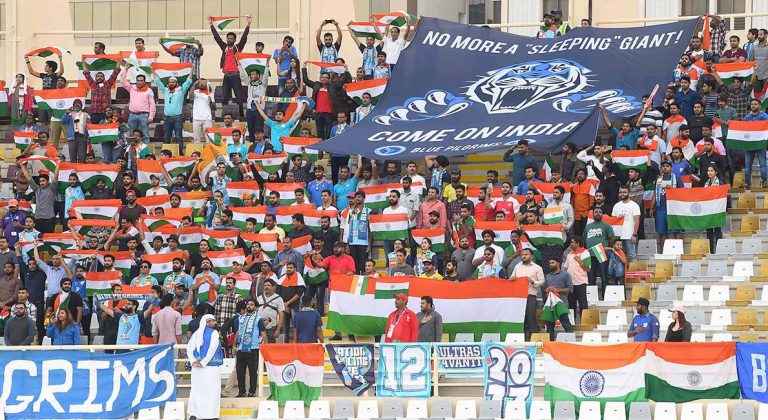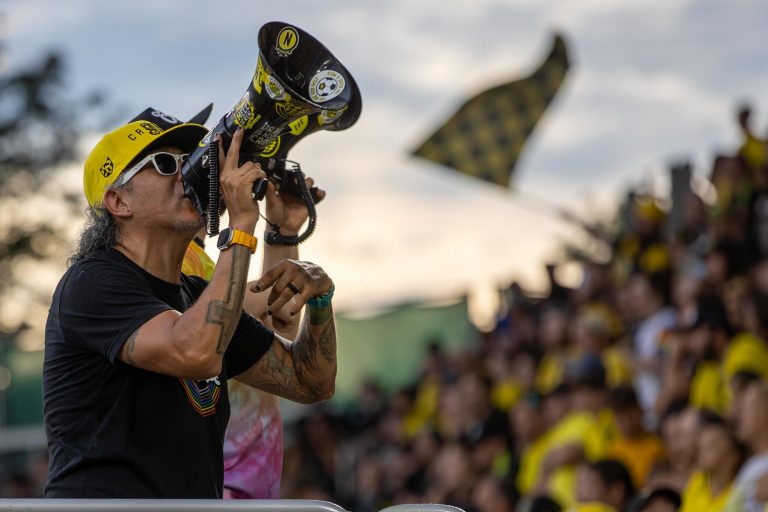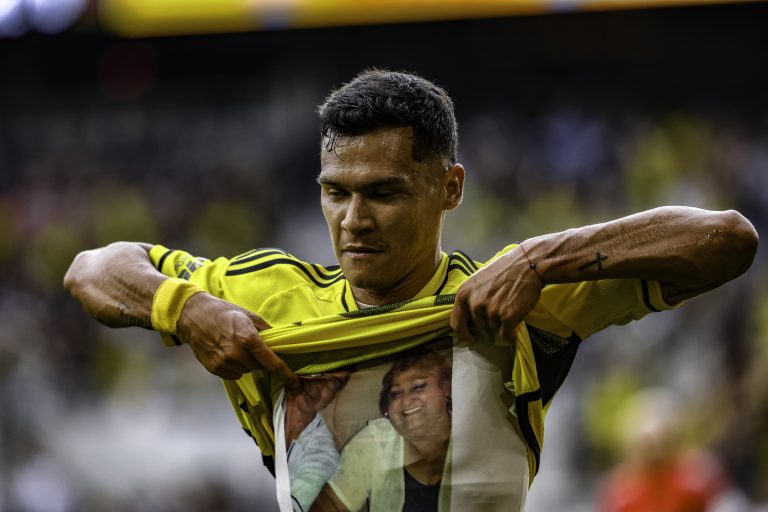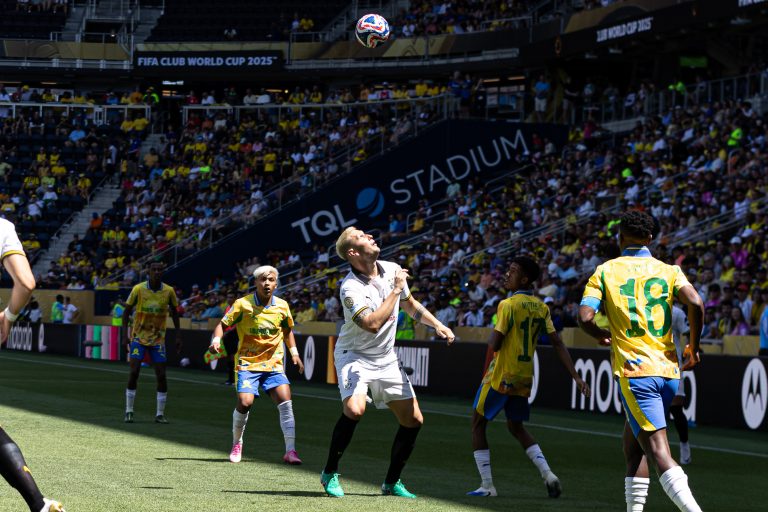International Soccer Network announced a formal content partnership with Kickoff India in early July. Here is our first segment with Kickoff India Director Vaibhav Pawar.

1. Why is India such an important market for international football as a whole?
Let me give you a small quote of FIFA President Sepp Blatter, who had visited India early last year:
“If we have to identify new territories where football can be a better part of life then definitely it is the subcontinent, India, where they have 1.2 billion people. This is really a double market, not just a market for football but for the economy too. India is a real power.”
The above words by the FIFA President speak for itself, the significance of India in the Asian and world market. The world knows the potential of India and what it can contribute to football. Emerging as one of the fastest growing economies in the world, FIFA sees huge potential in India and are taking keen interest in their developmental activities. A small example being FIFA giving eight artificial turfs to India, which has never happened in the history of FIFA. The world football body is also keen on giving the FIFA 2017 U-17 World Cup to India so that the image of football grows in India.
Even recently elected AFC President Shaikh Salman said that the progress of Asian football lies in the progress of Indian football. With two-thirds of the world population in Asia, India holds a lot of importance in international football.
2. How do you think the national team is progressing?
There are two ways to see the progress of the national team, the short and long of it. India’s new coach Wim Koevermans has brought in a new style of play that focuses more on possession football, something which has never been India’s forte. India has always been taught the English style of football by floating the long balls and letting the strikers do all the hard work. This is something Koevermans is trying to change with the national team; as everyone knows that Indians are not physically built so this style of football is hard to work with.
The latest results have not been encouraging, but you can’t change the style of play of a national team overnight. It’s a gradual process which takes years of hard work and the changes need to be implemented right from the grassroots level so that the same style of football is played in all age groups.
That’s where I come to my second part of the answer; the changes are slowly taking place. Five years back, where India hardly had any academies, now we have more than a dozen. The All India Football Federation (AIFF) have themselves started four regional academies of different age groups, which keeps the different age group national teams together for a longer duration of time. Even the coaches, be at the I-League level or at the grassroots level, have been told to follow the same style of football.
The results can slowly be seen with the junior teams making it to the knockout phases of the Asian competitions. So the seeds are sown and India’s future looks bleak.

3. What can you tell us about “Lakshya 2022”?
Lakshya 2022 is the master plan written by Technical Director Rob Bann for the development of Indian football. The document has all the ingredients for football development from the grassroots level to the senior level. Changes that needs to be brought into Indian football so that the national team progresses are part of this 125-page blueprint. It’s a complete roadmap for India to become a football powerhouse in the coming years. It’s needless to say the progress has been very slow so far.
4. What do you think of the work done by Rob Baan and Wim Koevermans?
Both the Dutchmen have brought a lot of professionalism to Indian football. There is a sea of changes and as I said earlier the future looks bleak. The duo is not only working at the player’s level, but also at the coaches’ level. That is the good part. If the teacher is not properly educated, then the students can’t properly learn.
Another example is the first-ever AFC Pro-License Diploma course to be conducted in India. The country had just two AFC Pro-Licensed coaches all this while and with conduction of this course there might few more additions to this tally. The entire course is also monitored by both Baan and Koevermans (who is also an UEFA Pro-License instructor), which further talks about their commitment towards improving the football in the country.
5. What can you share about the IMG-Reliance Tournament? How does that affect the I-League?
It’s no secret that such a tournament is not played anywhere in the world. IMG-Reliance is the commercial partner of the AIFF and when the 15-year contract was signed in 2010 they had a clause in the contract of starting a new league.
Apparently they tried to improve the I-League (they claim so), but sadly failed to make any changes to it. And in their last ditch effort to improve the promotion of Indian football, they have decided to start this league. This hasn’t gone down well with the I-League clubs and they have denied any kind of support to them. The two bodies are at loggerheads now and because of this the (IMG-Reliance signed) players are suffering and there is lot of discomfort in Indian football now.
The Indian FA recently allotted a three-month window to IMGR to conduct this tournament thus handing I-League a three-month midbreak. The window has been given between January to March, which is also the best time to play football in India, and naturally the I-League clubs are unhappy about it.
6. What are some major moves that have been made in preparation for the I-League season?
Last year, there were players from 24 different countries playing in the I-League. Out of which some of them were national team players. The standard of the I-League has been on the rise from every passing year and with addition of a few new city-based teams the popularity of the I-League is expected to grow even more.
Last season Blackburn Rovers player Edinho Junior was loaned to Shillong Lajong for a three-month loan, which was rare in Indian football. Then there was a Costa Rican World Cup veteran Carlos Hernandez playing for Prayag United. Gabon striker Henry Antchouet and South Sudan striker James Moga adding to those plying their trade in India.
This year too there have been quality signings with Billy Mehmet (former Ireland player), Simon Colosimo (former Manchester City player), Cornell Glen (Trinidad & Tobago player) and many more top players coming to India to grace the I-League.
Talking about coaches, 7 out of 15 teams had foreign gaffers. Some of the coaches are top class and have proven records elsewhere. Mike Snoei (Pune FC, Netherlands), Ashley Westwood (Bengaluru FC, England), Oscar Bruzon (Sporting Clube de Goa, Spain), Marcos Falopa (East Bengal, Brazil) and Abdul Aziz Mashood (Mohammedan Sporting, Nigeria) have all been successful with their earlier clubs while Karim Bencherifa (Mohun Bagan, Morocco) and Arthur Papas (Dempo, Australia) are proven material in Indian football.
7. Who is the top player in the I-League? Why?
You can’t really zero down on any particular player. But Ranty Martins (Prayag United) and Odafa Okolie (Mohun Bagan) have been sensational and had tremendous impact in India the past five seasons. Martins has won the Golden Boot the past two seasons, scoring goals galore (32 and 25 respectively). Before him Okolie won the hat trick of Golden Boots for his astonishing goal scoring record. Both have been ruling the Indian goal scoring charts for a long time now.
8. What teams are expected to contend for the I-League title?
To be frank, there have been lots of transfers in the recent transfer window so to choose any one side would be difficult. Churchill Brothers, with their young squad, lifted the title last year. But East Bengal is one team that has caught everyone’s eyes. They were a revelation under former coach Trevor Morgan last year, where they managed to reach the quarter-final of the AFC Cup (to play their last eight tie on September 17th). They are one team who have retained most of their players and at the same time have made quality foreign signings. I will once again give them an edge over the others.
9. Who are three famous Indian footballers that have made an impact on the game in India and/or abroad?
When you talk about Indian football, the two names that instantly come to your mind would be Bhaichung Bhutia and Sunil Chhetri. Their contribution to Indian football has been immense. Bhutia was the second footballer (after Mohammad Salim) to ply his trade on foreign soil and represented clubs like Bury FC (second division English club), Perak FA and Selangor MK Land (both Malaysian Super League clubs). He successfully carried the Indian flag at the international level for 16 years.
After Bhutia’s retirement, Sunil Chhetri took over from him and since then he has been the face of Indian football. Following Bhutia’s footsteps, Chhetri signed for MLS side Kansas City Wizards and then played for Sporting Lisbon B to become the third Indian to play outside India.
Another name that I would never forget is IM Vijayan. The Kerala born striker never played outside India, but the impact that he had in Indian football was immense. He along with Bhaichung Bhutia had a lethal striking force in the 90’s. Often regarded as “The Indian Black Pearl,” he is the third quickest goal scorer when he scored in just 12 seconds against Bhutan in the 1999 SAF Games.




